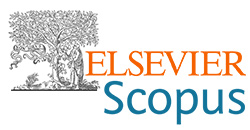Water quality of the shkumbini river, Albania: evaluation by physicochemical parameters and nutrient content
DOI:
https://doi.org/10.62638/ZasMat1270Apstrakt
Water is a vital natural resource that sustains both human life and the environment. Monitoring freshwater quality is essential to assess water conditions and ensure compliance with established quality standards. It is necessary to test the nutrient and physicochemical parameters of water against national and/or EU standards before it is used for various purposes, including drinking, domestic, agricultural, and industrial applications. This study focuses on the water quality assessment of the Shkumbini River, examining the distribution and levels of physicochemical parameters and nutrients along its course. The study was conducted in March 2022 through in-situ measurements of water quality parameters, combined with chemical analyses of nutrient content. The results indicate that geographical location, urbanization, human activities, and weather variations within the river catchment are primary factors influencing changes in water quality. Although the number of sampling sites was small (N=4), the measured results for all parameters followed a normal distribution (tested by the Anderson-Darling test, p > 0.05) and exhibited low variation (CV% < 25%), except for total suspended solids (TSS), which showed moderate variation (CV% = 49%). The water quality parameters were below the permitted limits, indicating good water quality in the Shkumbini River. This finding was further confirmed by the Water Quality Index (WQI), which classified all monitoring stations within a good water quality status (71 < WQI < 90). This status is likely associated with low water temperatures and rainy conditions in March. The outcomes demonstrate the reliability of the water quality parameters and the effectiveness of the employed model for assessing water quality.
Ključne reči:
river water, sampling, water quality, physical-chemical parameters, nutrientsReference
Water UN (2007) Coping with water scarcity: Challenge of the twenty-first century. Report for World Water Day 2007. https://openknowledge.fao.org/server/api/core/bitstreams/f1100f37-2a84-4abb-a661-90ff7aa0b648/content
H.Wang, X,Xiong, K.Wang, X.Li, H.Hu, Q.Li, H.Yin, C.Wu (2023) The effects of land use on water quality of alpine rivers, A case study in Qilian Mountain, China. Science of the Total Environment. 875, 162696. https://doi.org/10.1016/j.scitotenv.2023.162696.
A.Lintern, J.A.Webb, D.Ryu, S.Liu, U.Bende-Michl, D.Waters, P.Leahy, P.Wilson, A.W.Western (2018) Key factors in fluencing differences in stream water quality across space. WIREs Water. 5, e1260. https://doi.org/10.1002/wat2.1260.
C.Cheng, F.Zhang, J.Shi, H.T.Kung (2022) What is the relationship between land use and surface water quality? A review and prospects from remote sensing perspective. Environmental Sciences and Pollution Research. 29, 56887–56907. https://doi.org/10.1007/St11356-022-21348-x.
S.Wolf, V.Esser, H.Schüttrumpf, F.Lehmkuhl (2021) Influence of 200 years of water resource management on a typical central European river. Does industrialization straighten a river? Environmental Sciences Europe. 33, 15-24.
https://doi.org/10.1186/St12302-021-00460-8
N.Mancosu, R.L.Snyder, G.Kyriakakis, D.Spano (2015) Water Scarcity and Future Challenges for Food Production. Water. 5(7), 975-992; https://doi.org/10.3390/w7030975
D.M.Anderson, J.M.Burkholder, W.P.Cochlan, P.M.Glibert, C.J.Gobler, C.A.Heil, R.Kudela, M.L. Parsons, J.E.Rensel,
D.W.Townsend, V.L.Trainer, G.A.Vargo (2008) Harmful algal blooms and eutrophication: Examining linkages from selected coastal regions of the United States. Harmful Algae, 8(1), 39-53. https://doi.org/10.1016/j.hal.2008.08.017
K.L.Reinl, T.D.Harris, I.Elfferich, A.Coker, Q.Zhan, L.N.De Senerpont Domis, A.M.Morales-Williams, R.Bhattacharya,
H.P.Grossart, R.L.North, J.N. Sweetman (2022) The role of organic nutrients in structuring freshwater phytoplankton communities in a rapidly changing world. Water Research. 19, 118573. https://doi.org/10.1016/j.watres.2022.118573.
EPA 2001. PARAMETERS OF WATER QUALITY, Interpretation and Standards ISBN 1-84096-015-3
S.Duka, B.Pepa, E.Keci, A.Paparisto, P.Lazo (2017) Biomonitoring of water quality of the Osumi, Devolli, and Shkumbini rivers through benthic macroinvertebrates and chemical parameters. Journal of Environmental Sciences and Health A. 52(5), 471-478. https://doi.org/10.1080/10934529.2016.1274167.
APHA, (1998). Standard methods for the examination of water and wastewater. 20th edition, American public health Association, American water works association, Water environment federation, Washington DC
SO 5667-1:2006. Water quality -- Sampling -- Part 1: Guidance on the design of sampling programmes and sampling techniques. 2006. https://www.sepa.org.uk/environment/water/aquatic-classification/
D.S.Chandra, S.S.Asadi, Raju MVS (2017) Estimation of water quality index by weighted arithmetic water quality index method: a model study. International Journal of Civil Engineering and Technology (IJCIET). 8(4),1215–1222. Article ID: IJCIET_08_04_136 Available online at http://iaeme.com/Home/issue/IJCIET?Volume=8&Issue=4
O.Yim, K.T.Ramdeen (2015) Hierarchical Cluster Analysis: Comparison of Three Linkage Measures and Application to Psychological Data. The quantitative methods of psychology. 11, 8-21. https://10.20982/tqmp.11.1.p008
A.Michalik (2008) The Use of Chemical and Cluster Analysis for Studying Spring Water Quality in Świętokrzyski National Park. Polish J. of Environ. Stud. 17(3), 357-362
F.D.Gibbons, F.P.Roth (2002) Judging the quality of gene expression-based clustering methods using gene annotation. Genome Research. 12, 1574-81. https://doi.org/10.1101/gr.397002
Appendix 7: Information On Water Quality Parameters https://www.epa.ie/pubs/reports/water/waterqua/iwqmolou/App%207.pdf
F.Pu, C.Ding, Z.Chao, Y.Yu, X.Xu (2019) Water-Quality Classification of Inland Lakes Using Landsat8 Images by Convolutional Neural Networks. Remote Sensing. 11(14), 1674-1681. https://doi.org/10.3390/rSt11141674
D.Zhu, D.J.Sample, Q.Qiao, Z.Liu (2023) Effect of water temperature on internal nitrogen release from sediments in the Pearl River Delta region, China. Hydrology Research. 54(9), 1055–1071. https://doi.org/10.2166/nh.2023.056
P.Temporetti, G.Beamud, D.Nichela, G.Baffico, F.Pedrozo (2019) The effect of pH on phosphorus sorbed from sediments in a river with a natural pH gradient. Chemosphere. 228. 287-299. https://doi.org/10.1016/j.chemosphere.2019.04.134
S.Zhao, X.Shi, B.Sun, Y.Liu, Z.Tian, J.Huotari (2022) Effects of pH on phosphorus form transformation in lake sediments. Water Supply. (2), 1231–1243. https://doi.org/10.2166/ws.2021.356
O.Vigiak, B.Grizzetti, A.U.Moinelo, M.Zanni, C.Dorati, F.Bouraoui, A.Pistocchi (2019) Predicting biochemical oxygen demand in European freshwater bodies. Sci Total Environ. 666, 1089–1105. https://doi.org/10.1016/j.scitotenv.2019.02.252
World Health Organization (WHO) (2004) Guidelines for Water Quality (3rd ed.), World Health Organization (WHO), Geneva







